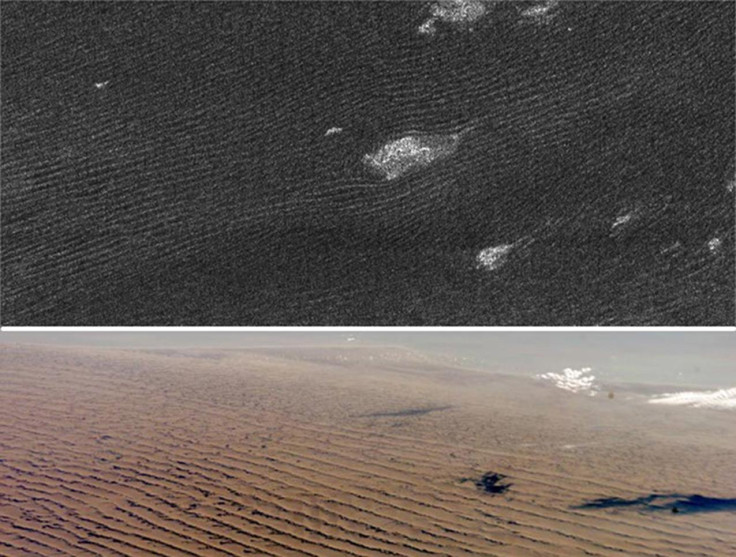Titan's sand dunes created by winds that blow only twice in 30 years

Fast winds that blow from the west on Titan, only twice during a Saturn year (30 Earth years), are responsible for its sand dunes, concludes a six-year simulation of Titan's surface conditions.
The winds must blow 50% faster than previously thought in order to move the sand.
"It was surprising that Titan had particles the size of grains of sand — we still don't understand their source — and that it had winds strong enough to move them," said Devon Burr, an associate professor in the Earth and Planetary Sciences Department at the University of Tennessee, Knoxville, and lead author of the paper.
The study was co-authored by Nathan Bridges, a planetary scientist at the Johns Hopkins University Applied Physics Laboratory in Laurel, Maryland.
First radar images of Titan returned by the Cassini spacecraft a decade ago showed never-before-seen dunes made of never-seen-before particles.
The biggest mystery, however, was the shape of the dunes. While Cassini data showed that the predominant winds blew from east to west, the streamlined appearance of the dunes around features like mountains and craters indicated they had to be created by winds moving in exactly the opposite direction.
The study points out that Cassini missed the west wind as it blows so infrequently.
The Knoxville team dedicated six years to recreate Titan's conditions using a Nasa high-pressure wind tunnel.
They pressurised the wind tunnel to 12.5 atmospheres (equivalent to being about 40 feet underwater) that correctly simulated wind physics at Titan's dense atmospheric pressure of 1.4 bars (similar to 4 feet underwater).
To account for the very low gravity and density of sand on Titan, and not knowing the material on the moon, they used 24 different substances, including very low weight particles such as hollow glass spheres and walnut shells.
The most accurate model showed that the minimum wind speed on Titan has to be about 50% faster than previously thought to move the moon's sands.
According to atmospheric models, the wind reverses twice during a Saturn year and it is during this brief time of fast winds blowing from the west that the dunes are shaped, says Burr.
Titan, with its dense atmosphere and a temperature of -180 degrees Celsius, also has rivers and lakes made of ethane and methane, besides the sand dunes that are dozens of yards high, more than a kilometre wide and hundreds of kilometres long.
Mystery objects and transparent oceans have caught the fancy of astronomers with Nasa even planning to sail a buoy on Titan's seas.
© Copyright IBTimes 2025. All rights reserved.





















